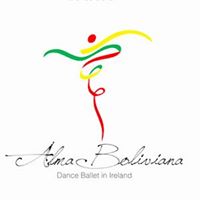Alma Boliviana Dance Ballet in Ireland

Alma Boliviana Dance Ballet in Ireland is a dancing group whose members are from Bolivia and other countries. The group, which was founded in 2015, was formed because of the passion its founders have for the diversity and culture of Bolivia. Its mission is to promote Bolivian culture through the medium of traditional Bolivian dances.
This group is open to anyone who likes to dance and who wants to learn about Bolivian dance. What does traditional Bolivian dance look like? You can check out a performance by Alma Boliviana Dance Ballet in Ireland by clicking here.
About Bolivian Dance
Bolivian traditional dance takes many forms and Alma Boliviana Dance Ballet performs a wide variety of Bolivian dances. These include the following:
TINKUS
Tinkus is an Andean ritual and folk dance of Potosi, Bolivia. The meaning of the word Tinkus in Quechua is "meeting" and in Aymara means “fight”. This dance was born of the representation of a ceremonial ritual conducted by the indigenous communities of Northern Potosí. Nowadays Tinku is danced in different events and festivities in Bolivia, especially in the Carnival of Oruro.
SAYA CAPORAL
Saya Caporal is a folk dance of Bolivia, which was inspired by the character of Caporal ("foreman") of slaves during the Spanish conquest. The Caporal was usually of mixed race. The dance has strong African roots and the style is typical of the Los Yungas, in the department of La Paz.
CUECA BOLIVIANA
The Cueca is a musical genre and a dance of loose mixed couples. The dancers, who carry a handkerchief in his right hand, draw circular shapes, with turns and half turns, interrupted by various flirts. Depending on the type of cueca represented, costumes can be changed.
MORENADA
The Morenada (Dance of the Black Slaves) is a music and dance style from the Bolivian Andes characterised by a mixture of African and indigenous elements. The most commonly shared theory says that the dance was inspired by the sufferings of the African slaves brought to Bolivia in order to work in the Silver Mines of Potosí.
TOBAS
The Tobas is a folk dance from Bolivia. The folkloric dance of the Tobas speaks of the ancient past of Bolivia. It has roots in a time when the Incas were the predominant force in the Andean highlands region. Tobas is an athletic dance comprising agile steps accentuated with many jumps and bounds.
YARITUSES
Yarituses is a dance that recalls the adoration of the ostrich gods and the devotion to the two key characters in Christian evangelisation, San Pedro and San Pablo. The image of the ostrich was related to the astral constellation of the Southern Cross, the protector of these natives. They are the Yarithuses, who accompany the saints in a sample of the syncretism of the evangelisation of the missionaries in the eighteenth century and the continuity of the Franciscans in these times.
ARETE
Arete means "time of harvest and production." It is a sacred ritual equivalent to the Pachamama cult of the Andean cultures. It has to do strictly with the gratitude to "Mother Nature." The dancers use in their dances a carved mask of white wood (Yuchan - "Palo Borracho") that fulfills the function of protecting the face of the dancer in the encounter with the soul of the dead that occurs in special passages of this celebration. The form or motive of a mask is directly related to the intention or identification of its holder.
TAQUIRARI
The Taquirari is a folk music rhythm and a dance from Bolivia, traditional to the eastern part of the country. To dance Taquirari, the couple must face each other and with their hands clasped. The jumps are marked by a moved rhythm, and forming common figures such as:
- Holding hands, face to face, the couple swirls on one side and then on the other;
- Hooks: Crossing the right arm and with opposite fronts, the couple turns in a whirlpool; they change the arm and then they turn in the opposite direction;
- Wheel: Couples form a wheel, interspersed and holding hands, move in both directions. In one jump they raise their hands and in another they lower them;
- Viborite: Holding hands, couples break the wheel and move in zig zag figures carried by the head.
Contact Alma Boliviana Dance Ballet
Though this group is based in Dublin, it is open to anyone in Ireland who wishes to join in and participate. Alma Boliviana also welcomes enquiries and bookings from the media, other groups who would like to partner with them, funders and anyone else who would like to know more.
You can contact the group's coordinators, Silvia Bernal and Diana Viveros, by calling (089) 427 6551 or (085) 851 0008 or by emailing almaboliviana.ireland@gmail.com.
Or, you can check out more of Alma Boliviana Dance Ballet in Ireland's videos, photos and upcoming events by visiting their Facebook page, at www.facebook.com/AlmaBolivianaIreland.